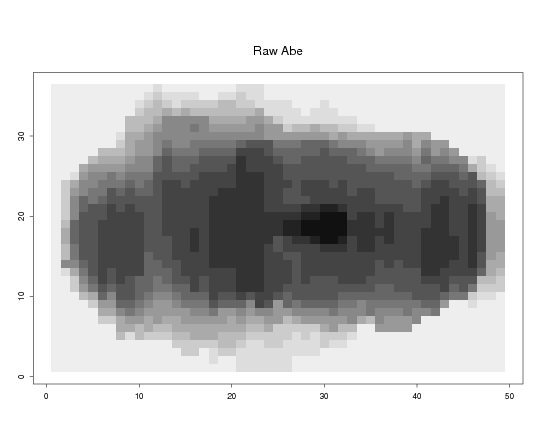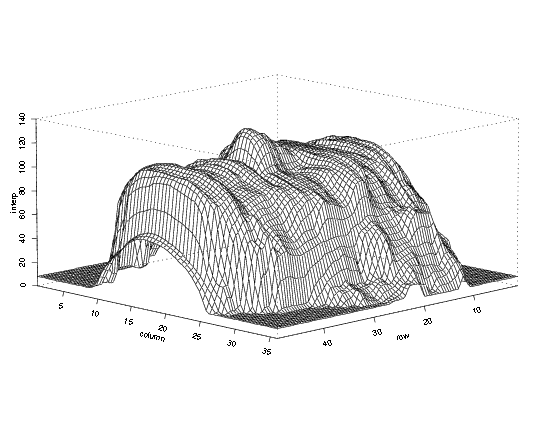
The Function Box Idea


|
The Function Box Idea |

|

Abe as a matrix |
Years ago I bought him the toy PinPressions, which illustrates the
idea, only backwards: Suppose we're interested in the function represented by the height of Abe Lincoln's face above a table: you could take a reading of the surface using pinpressions; if the pins were all wired, we could read off the coordinates (as a matrix), and then create a function to interpolate those values. This is an example of rapid prototyping. We want to operate in the reverse sense, however: suppose that we have a formula and seek a graphical representation of the surface corresponding to the function. We simply sample the function, and raise the pins to the corresponding heights, as a graphical representation of the function. |

Abe as a function |
But how does one create a function box?